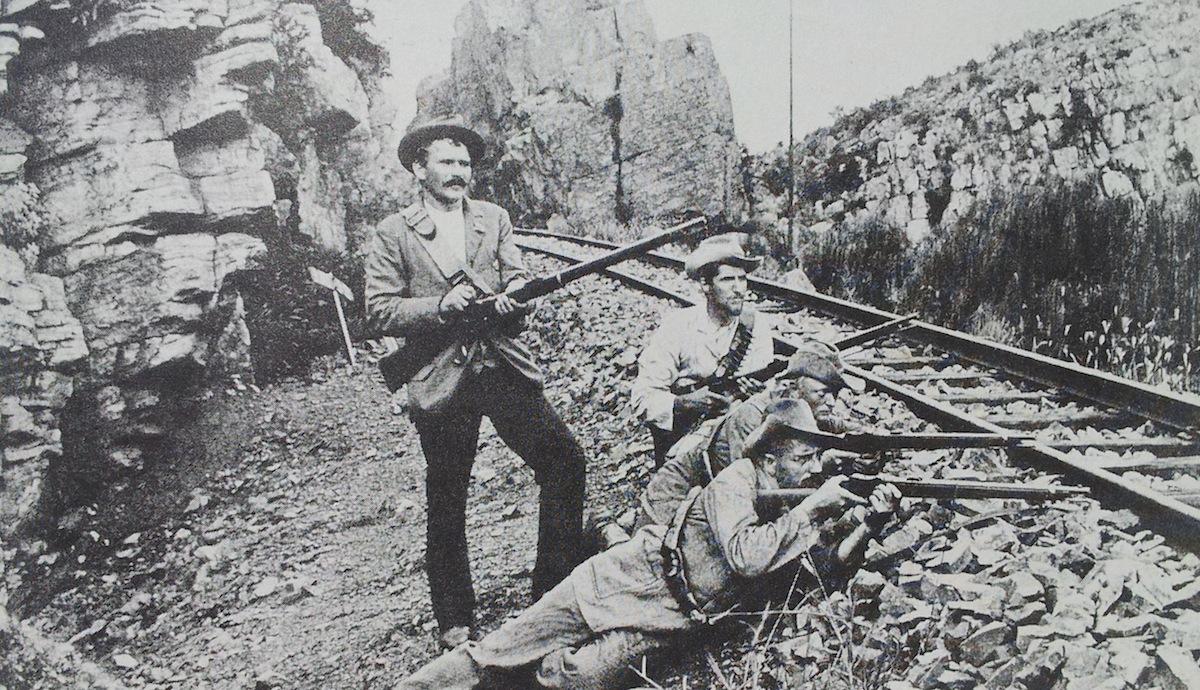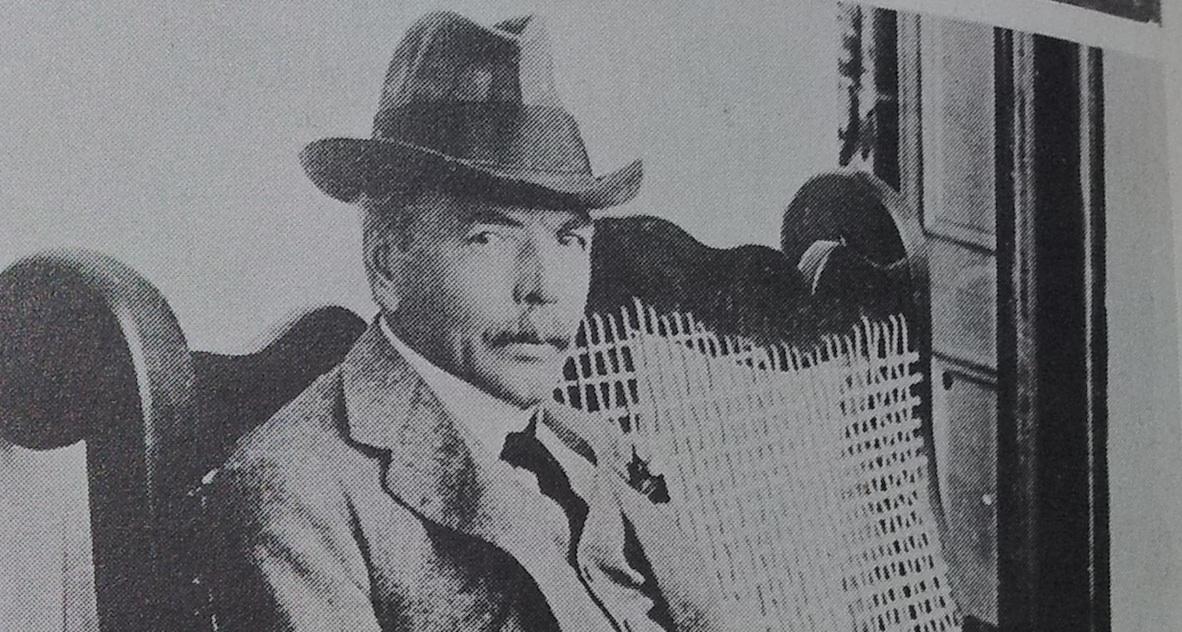
Disclaimer: Any views expressed by individuals and organisations are their own and do not in any way represent the views of The Heritage Portal. If you find any mistakes or historical inaccuracies, please contact the editor.
In 1996, a group from the Johannesburg Historical Foundation visited multiple sites associated with the Jameson Raid to mark the centenary of the historic event. Following the visit, Rob Milne put together this wonderful piece which appeared in the 1997 edition of the Foundation's journal Between the Chains.
On Tuesday 2 January 1996, the centenary of the Jameson Raid, two small parties visited the surrender site at Doornkop. Hamish Gilfillan, whose great-grandfather was a member of the Reform Committee was there at the approximate time of the surrender. My party arrived around lunchtime, having traced the footsteps and burial places of the raiders and their adversaries. Barely thirty people commemorated an event which led to the Anglo-Boer War of 1899-1902, and which was a contributing factor to the Great War of 1914-1918 that cost millions of lives.
Battle Sites
After 100 years, what remains to be seen that relates to the Jameson Raid? If you drive westwards out of Krugersdorp on the Rustenburg Road (R24), you will see the old Queens Mine dumps between Robert Broom Drive and the entrance to the Krugersdorp Game Reserve. The dark red eroded mine dumps overlook the rocks and rubble from the now-levelled mine buildings. There is a small mine shaft still in operation on the crest of the Queens Mine ridge. The stream and vlei at the bottom of the valley is now crossed by a bridge instead of a drift and, looking back, you realise what a strong defensive position the Boers occupied. Proceeding westward from the stream you climb a steep ridge (Remhoogte), the one from which the Boers were shelled. I have checked the range (1900 yards) and it is accurate. According to the account of the action in From Manifesto to Trial a heavy shower of rain fell just before the artillery opened up, drenching the already exhausted men on Remhoogte.
The raiders' retreat southwards towards Randfontein possibly followed a track situated between the stream and ridge, but most of the area is now covered by dump re-processing operations. There is a huge vlei on the top of the hill surrounded on three sides by mine dumps, and ringed by very old gum trees on the fourth (south) side. The banks are steep, and this is almost certainly where the raiders made their last miserable camp. The following description appears in From Manifesto to Trial:
It was decided to form laager and a camp was eventually pitched in a suitable position on the brink of a large vlei with precipitous sides affording excellent cover. Hardly were the squares formed, when then Boers again opened fire, killing one man and wounding several. Orders were immediately given that no lights were to be lit in the camp, the only light allowed being in the tent of the one of the wagons temporarily used as a hospital for the wounded. This light afforded a good mark for the Boers, who kept up an incessant fire, the rattle of the guns being deafening. Most of their bullets, however, went overhead on account of the well chosen position occupied by the column. The Boers were also very advantageously placed behind the Potchefstroom railway earthworks. A lot of the troopers horses stampeded and were lost. Some of the troops took advantage of their position to snatch a few hours sleep, notwithstanding the din caused by the firing of the Boers, who evidently intended to harass the now worn out men.
Five of the troopers who were killed on 2 January 1896 are buried next to the Krugersdorp-Randfontein railway line (the Potchefstroom railway), a few hundred metres away from the vlei. According to Longford: “Two troopers were killed, they were buried with less pomp than the dead at Corunna. Next day a visitor to the battlefield was shocked to see the feet of one of those poor fellows sticking out from the heap of earth which his comrades had shovelled over him.”
The headstones of troopers Beatty-Powell and Davies were moved to this plot a few years ago from a site 1200 metres to the north-east, because of the encroachment of recycling activities from the adjacent mine dump. According to Morris Gough-Palmer, who used to head up the War Graves Commission of the National Monuments Council, no remains were found when the graves were exhumed.
The metal crosses of troopers Hennessey, Foster and Bletsoe bear the following inscriptions:
Theirs was not to reason why
Theirs was but to do or die
This is a quotation from Alfred, Lord Tennyson’s poem The Charge of the Light Brigade of 1854. Perhaps the next line should also have been added:
Into the valley of Death
Rode the six hundred
Jameson’s force consisted of 511 officers and men, and 150 drivers, a total of 661 – the ‘six hundred’. Jameson and his raid inspired the poem IF by Rudyard Kipling, and the third verse is especially relevant:
If you can make one heap of all your winnings
And risk it on one turn of pitch-and-toss
And lose, and start again at your beginnings
And never breathe a word about your loss
In later life Jameson refused to discuss the raid, and would even leave the room if the subject was raised.
Jameson (source unknown)
War Graves and Memorials
Moving on to the surrender site at Doornkop, the stone kraal is surrounded by a metal fence and has a stone monument in the centre. The names of 20 of the raiders are listed on the monument together with those of the Boers. Two of the troopers names have been omitted from this monument (Beatty-Powell and Davies) and one of the Boers (van Tonder). Captain Barry, buried in the Krugersdorp cemetery, is recorded as Captain Barr. Thus the final tally of those who fell is 22 raiders and five Boers. Some of the fallen raiders were buried in a prospector’s trench, the location of which has been identified by the Roodepoort Museum. On 29 May 1900, during the second Anglo-Boer War, a battle which led to the occupation of Johannesburg was fought over the same ground at Doornkop.
Captain Barry and three troopers of the BSA Police are buried at Krugersdorp cemetery, as are the five Boer casualties. The memorial to the latter is interesting in that it claims that George Jacobs was shot whilst trying to give water to a wounded enemy. Another interesting grave in the cemetery relating to the Jameson Raid, is that of Fighting General Sarel Oosthuizen (1862-1900). ‘Rooi Sarel’ or ‘The Red Bull’ took part in the First and Second Anglo-Boer Wars. He was a member of the force that captured Jameson, and the one that captured Churchill at Chieveley. Badly wounded at the battle of Dwarsvlei on 11 July 1900 (in which two Victoria Crosses were won), he refused medical attention and free passage offered to him by General Barton in Krugersdorp, and died of his wounds on 14 August 1900. Lt Sarel Johannes Eloff, a grandson of President Kruger, is buried on plot 2712 in section K of the Krugersdorp cemetery.
[Lt. Eloff met with Jameson at Boon’s store on the evening of 31 December 1895. Jameson arrested and disarmed him before releasing him in the promise he would remain at the store for two hours after the raiders' departure. On New Year’s day a scouting party was fired on as they were approaching Queens Mine. The scouts captured a few Boers, including Lt Eloff, but released them after giving them refreshments. According to some authorities Lt Eloff took the first news of Jameson’s surrender to Pretoria, whilst others place him in the party which escorted prisoners to Pretoria.]
The allatsea network blog run by Derek Walker has a number of more recent posts on various sites associated with the Jameson Raid. Click here to view.
Comments will load below. If for any reason none appear click here for some troubleshooting tips. If you would like to post a comment and need instructions click here.

